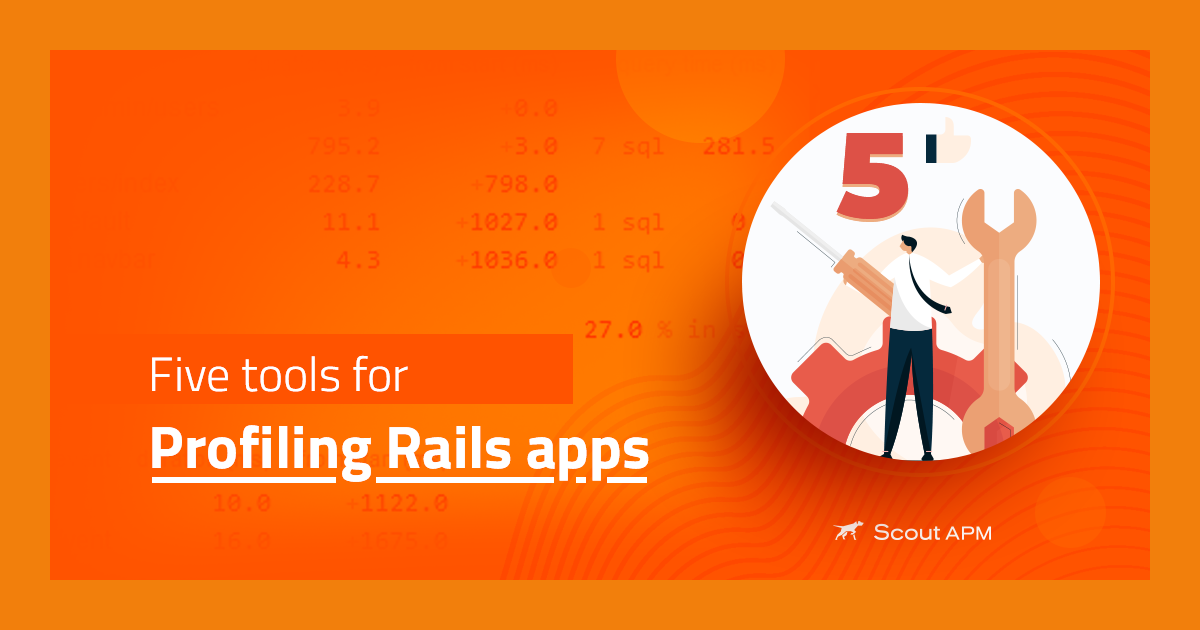What’s Up with Synthetic Monitoring?

If you are running a website or have a live application, you will have to ensure that the digital experience for your end-user is seamless. That is where Synthetic Monitoring can help. Any bad experience, delay, or even a glitch could hurt your budget. Industry experts unanimously agree that it is best to ensure that the web pages load as quickly as possible.
Today, everyone is online, and every business is competing for the attention of potential users. These potential users eventually can become regular customers and add value to the company. Research into E-commerce websites in 2020 shows that only 2.63% in the United States, while globally, it is 4.31%. So for every 100 users, approximately 3 of them will end up becoming a customer. It may not seem like a large amount when reading it aloud. But in the bigger picture, that is a lot of customers lost. Eventually, this means that user retention on a website is the key to business growth.
Research into site speed has also shown that if the site loading time is longer, it will reduce the conversion time. A 2021 research by Portent in transaction conversion rates against time proves that the longer it takes for a site to load, the lesser the conversion rate. If the site loads within 0 seconds, the conversion rate is 8.11%; at 2 seconds, it is 4.64%; and at 4 seconds, it is 2.24%. The downward trend tells us everything we need to know about site performance.
Many brands use APIs, websites, and web and mobile applications. There has to be a way to monitor the performance of APIs, websites, and applications. In this case, the logical way to go about it is to have a tool that monitors these systems. Consider using synthetic monitoring to support your business and optimize your web pages. A system or a tool is required to practice application performance monitoring. You, as a developer, are concerned about two things when implementing an APM tool:
- How will your end-users experience the application or the website you have created?
- How do you analyze the insights that you have collected to help you make the right business decisions?
Luckily there are many ways of monitoring the performance of your website or application. In this article, we delve into one of the techniques used for monitoring: synthetic monitoring.
Feel free to use these links to navigate the guide:
- What is Synthetic Monitoring?
- Synthetic Monitoring vs Real User Monitoring (RUM)
- Types of Synthetic Monitoring
- Synthetic Monitoring Use Cases
- Implementing Synthetic Monitoring
- Key Points
What is Synthetic Monitoring?
Synthetic monitoring is also known as directed monitoring. In this method of monitoring, developers simulate user activity in their applications. With the help of the simulation, developers can gather information about uptime and the performance of a business’s most critical transactions. It can also identify the most common pathways that users follow when using the application. It uses a scripted and recorded series of requests and then channels them through the path to simulate how users interact with the website or the application.
Other names for synthetic monitoring are synthetic testing, proactive monitoring, and active monitoring. Using this method of application performance monitoring as a standard practice helps you as a developer to understand what user experience is like. This information can help you make better decisions about making improvements. Call it predicting behavior so that you know beforehand by being able to operate the environment as a user.
How Synthetic Monitoring Works
When using synthetic monitoring, developers can answer the following questions:
- Is the website up and running?
- What is the speed of the website?
- Are the transactions working as planned?
- Are any of the third-party components operating?
- Is the performance of the website or web application cost-effective?
- Where is the website slowing down?
- Where is the failure showing up?
- How is the performance of your CPU/Memory Utilization?
It answers these questions by simulating web transactions before your end-users will use the website or applications. It would simulate a transaction going from the virtual client to the website or application. Once the data travels through the pathways, it sends information back about what a typical interaction of a user could look like. The checkpoints contain predetermined measures such as how functional the system is or is it available. This depends on the kind of test the developer wants to conduct. It ensures that the website is available for the user to use at all times.
Synthetic monitoring can test in private environments before developers want to deploy new features. In doing so, they can tell exactly where and when an issue will occur. This proactive testing ensures that this issue does not reach your audience. If it reaches the audience, you risk losing customers, who will now be looking at a competitor’s website while you are fixing issues in the backend. If you can root out an issue before it is released, there is a higher chance for you to provide a high-quality website and optimize a healthy user experience on your digital assets. This increases trust for the end-users, and your company can grow.
What’s great about synthetic monitoring is that it takes up a few resources to create a baseline for you to know what the minimum experience is like for the end-user. The tests can happen at any time of the day and anywhere, so you know the availability of your system. However, the information provided by synthetic monitoring should be indicative rather than definitive.
This process has several steps as detailed below:
- Definition of test type and checkpoints
- At the checkpoint, contact is initiated, and responses are checked for; if it is working fine, the test moves to the next checkpoint
- Reports are generated for the responses, and sent to the monitoring system
- The system is alerted for any errors that occur
- The checks are done at regular intervals
Advantages of Synthetic Monitoring
Here are some of the advantages of having synthetic monitoring set up in your applications.
Testing from the Perspective of the End-User
When using synthetic monitoring, you are thinking about the end-user. You make decisions with the impact on your users in mind. That said, the tests show what requests your end-users will make and what the outcomes are. It enables you to truly measure what the experience will be like and make tweaks before you make a final release. You can also do it while the website is already up. When you consider your end-user in mind, you can create diverse solutions to various issues that can arise.
Creating Baselines and Benchmarks
When using synthetic monitoring, you can monitor all your websites, APIs, and applications. You can also control the frequency of the tests and the location to test at any time of the day. As time progresses and you collect enough data, you will be able to analyze the data into information that can be handy. This information can be used as a baseline or a benchmark for performance and quality assurance. You can also use this to strategize your next release. Since you have been collecting information over time, it will give you a time series analysis of what worked and what didn’t, based on parameters that you set.
Root out problems and immediately fix issues
Tests are always there to root out problems. Synthetic monitoring is a test to help you do just that. The added advantage is that you do this before it affects your end-users. Once an issue is found, it can inform the developers of where the issue is and what the team needs to fix. This is because the parameters are already set. Synthetic monitoring is all about ensuring availability so you can find out what is stopping your website from working and fix it immediately.
Gear up for Peak Traffic Situations
If you have a website, then you know there are times when there are many users on the website and times when there are very few users. Synthetic monitoring helps you prepare for issues that may arise when there are peak traffic situations. Synthetic monitoring has a unique ability to monitor areas of the website that does not have real-world user traffic. This is especially helpful for the company when there is either a new product launch, a seasonal sale, or even when you want to launch in a new region. It would be able to alert you if any issues can affect the level of service that is expected from any vendor by defining the metrics by which a service is measured.
Monitoring Transactions and Business Processes that are Complex
Synthetic monitoring allows you to monitor complex transactions and understand your business processes. When you are checking for the availability of your website and applications, it is not enough that you know whether it is just working or not. It also helps if you know how to script what your end-user would be doing on the website. This way, you can better test out the processes and get a much clearer picture of the output of your services. These processes include how a user logs in, how a form is filled, the addition of items into a shopping cart, the way things are checked out, how long it takes for one checkout workflow, how easily the search is done, or even checking for different geographies. With this information, you are equipped with the ability to compare performance statistics and devise improvement strategies.
Holding 3rd Party Vendors Responsible
Today, many websites depend on applications. With the ability to outsource to make processes easy, websites also rely heavily on third-party APIs and not just one. These APIs support the website and allow it to run certain features as designed by the developers. However, since it is a third-party component, you do not have full control of how it works at the end of the day.
You can, however, find out whether these APIs are working as promised or not. You can also find out if the API is slowing you down or not through synthetic monitoring. You can hold the vendor responsible and accountable for their SLAs with you. These reports enable you to provide proof of issues that the vendors are creating and also create an environment where vendors ensure that they are delivering as agreed upon.
With synthetic monitoring, you can monitor and ensure service level agreements are met. You can also track incidents that you can make the vendor responsible for.
Synthetic Monitoring vs. Real User Monitoring (RUM)
There are two types of monitoring systems in general. Synthetic monitoring is one of them. The other one is known as real-user monitoring or RUM. Both monitoring methods alert the development team about any deviations with regard to availability and if there are issues with the tasks.
Synthetic monitoring is known as directed or active monitoring. On the other hand, RUM is known as passive monitoring. When using synthetic monitoring, the developers use scripts to imitate an activity that is similar to what a real user will conduct and see how it behaves in the system. It would be used to tell if the website is available for the user before the user gets to use the website.
RUM, on the other hand, collects information about availability when real users are conducting transactions on the website. Their behavior is being monitored in real-time, and if there is a problem, it immediately alerts the developers about anything that had slipped during early tests and into the release. It shows what is happening simultaneously as compared to synthetic monitoring.
In the end, you can say that the difference between the two systems is when it is used and their nature. Synthetic monitoring is used before a user is going to interact with your system. It is pre-emptive and proactive and alerts when issues can potentially arise. Real-user monitoring is used when users are interacting with the system. It is passive and alerts only when a real issue arises.
Types of Synthetic Monitoring
There are many types of synthetic monitoring. It is a good idea to familiarize yourself with them. Here is the list that will be helpful to you:
Uptime Monitoring
This is by far the most used technique for monitoring. It is also the most basic. It helps developers by checking for the availability of the website. Uptime monitoring’s method involves a simple request that is sent to an endpoint defined by the developer to test. It also sends at a specific interval, which then sends back a report about the results. This information lets you know if your website, software, or application is working or not. It is usually measured in percentages, and the higher the percentage, the better. As mentioned above, since businesses compete to get customers on board, the website must be up 99.999% of the time.
HTTP Monitoring
Since the world has become a smaller place because of the internet, you can expect to have users from all over the world. In this type of synthetic monitoring, developers devise checkpoints that are located all over the world. These checkpoints are pinged at and they then report back to let the developers know if there is availability. Through this method, you also get information about the loading speed and the status of the HTTP code.
Synthetic Transaction Monitoring
Synthetic transaction monitoring emulates clicks and swipes that are scripted by the developers to see how user transactions and interactions affect the system. It checks to see if the output of the clicks and swipes is working. It is a proactive monitoring method that ensures that the transactions behave the way they are designed. It will inform you about any deviations or errors that could potentially make users abandon a transaction or a purchase on your website.
Browser Monitoring
This type of synthetic monitoring looks at websites and applications that depend on a large environment. The environment contains many frameworks and third-party APIs. In such a case, developers would want to make sure that the framework and APIs are working in harmony. It does not matter what operating systems or browsers the users use to access the website, but you want to ensure it works. Browser monitoring emulates various browser performances. It looks at how the browser will work when loading a website or application. With this understanding, you will be able to understand how the user will experience the website through a particular browser.
API Monitoring
APIs play an important role in how successful a website or an application can be. Whether APIs are external or internal, they make the experience for the user a pleasant one or an undesirable one. Since many of the APIs work as a framework with multiple other APIs as dependencies, developers must know which API is causing problems. API monitoring helps you achieve that.
Web Performance Monitoring
We have already established that having users stay on the website is key to a company's success. However, to do that, the app should be highly available and serve user requests as fast as possible. This is where web performance monitoring comes in. It creates intricate networks of monitoring systems to keep up with your resources and look up important website metrics. This information shows you your users’ experience and helps you make decisions about the type of features you would like to keep or improve on in the future.
Synthetic Monitoring Use Cases
You can leverage synthetic monitoring to support your business by ensuring things work as you have designed them to. Through its active performance monitoring capabilities, you will be able to use it for many cases, such as the following:
Test Features
To keep a step ahead of the game, you have to innovate. To do that, you have to create new elements and find a new competitive edge for your website or application. However, you do not want to risk downtime for your current website for your customers when rolling out new features. So before you can release it, synthetic monitoring can help simulate the script that you create for user interaction and test out how it can work out. It is a secure environment for you to see if your feature will work successfully or not.
Improve Customer Experience
If you are using synthetic monitoring, it shows that customer or end-user experience is at the top concern when you are designing your website or application. You are your quality assurance team when you are using synthetic monitoring. Without it, your end-users are the ones who find out about your downtime, and that automatically spells disaster. So, this technique ensures that your customers do not face downtime or any glitches so that you can rest knowing what you put out there is exactly as you planned.
Compare Against Competition
Synthetic monitoring provides you with a crucial time series analysis of how your website and applications are performing depending on the parameters that you set. With this information, you will also see how a competitor’s websites and applications are working. The comparison can help you assess your strengths and weaknesses. You can then strategize how you want your company to grow through this information.
Explore New Territory
One great thing about synthetic monitoring is that you can determine location-specific availability by setting up geographical checkpoints. These geographical checkpoints can support you in making sure that there are no problems when you are about to explore new territory or launch a new page or application. This way you already know what the user can expect.
Evaluate Third-Party Vendor Service Performance
Since you know how important third-party APIs are for websites and applications, you can use synthetic monitoring to keep track of their performance. It makes life easier for you when you ensure that all the digital assets you designed as a framework work for you. Synthetic monitoring will alert you if there is an issue, and you can immediately contact your third-party vendor about the problem. You can also compare different third-party vendor services to evaluate which one works best for you before you commit to their services.
Implementing Synthetic Monitoring
To implement synthetic monitoring, know that you will need a synthetic monitoring tool to support you. Once you have selected a tool, you can choose what exactly you want to monitor in terms of availability. You will also have to create a script for how a user will interact and know what you expect the system to produce. Once you have those, here are some best practices that you can use to implement when using synthetic monitoring:
Alerts
When it comes to alerts, you must know that these alerts are proactive. That means they will notify you before the issue is reported to you by a user. You want to make sure you understand how you are receiving your alerts. You can control the following:
- How an alert is made
- When an alert should be made
- Who the alert should go to
When coming up with the customization for alerts, make sure that you can receive them conveniently and fast. The faster you are alerted to an issue, the minimal disruption for your clients.
Transaction Monitoring
In most cases, it’s not enough only to know if the website is running or not. You should set up transaction monitoring to know how a complex request made by your client is going to be conducted on the system. This could include seeing how registrations are made or how a user adds items to a shopping cart. Having this information helps you create strategies to improve the interaction. So you should always set this test to take place regularly.
Multiple Location Testing
Do not be afraid to run tests in multiple locations at different intervals. Websites are available worldwide, so take advantage of them. Ensure that people all over the world can see your content. You can use this to compare performance across geographical regions to get information about speed, performance, and local CDN outages.
Reporting
Save all the reports to keep track of the information you have. Most tools available for synthetic monitoring will provide you with one after every test. This information strengthens your decision-making for improving the growth of your company.
Synthetic Monitoring in Tandem with Real User Monitoring
We spoke about synthetic monitoring and compared it to real user monitoring. While synthetic monitoring works before the content goes out to the end-user, it is also equally important to hear from your end-users. This gives you comprehensive control and understanding of how your websites or applications are working.
Key Points
Understanding user experience is an important aspect of business development. Since many end-users will interact with your website or application, you must keep the user in mind when making decisions. Knowing how your user experiences your application or website allows you to know how they will feel when interacting with your designs. You will know how convenient or inconvenient a certain aspect will be for them. You will know what can go wrong before it even goes to the end-user, saving you so much time on fixing the issue and on the PR disaster that it can end up becoming.
Synthetic monitoring can be used in many ways to ensure that your website and apps are working fine. It ensures that it is up and running so that your end-users are converted and satisfied. You want to ensure that they can return. So before any issues can become a real issue, you can nip them in the bud through synthetic monitoring, providing your end-user with the best possible experience.
You can get started with synthetic monitoring today by signing up for Scout! Scout APM offers a free 14-day trial to test the tool in your projects before signing up.





